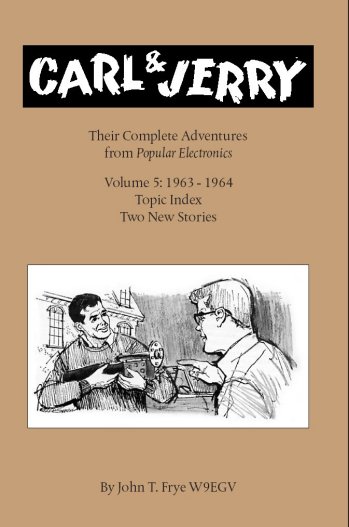First on my do-it list this morning was to deliver a lecture at Miami University at Middletown, Ohio. I’m still here in Colorado (though, alas, Carol is in Chicago again and I’m batching it until the 26th) but it worked out well, and the lecture was my first “production” use of Skype and the Mikogo plug-in for Skype for remote presentation.
Jay Slough K4ZLE of the Southwest Ohio Digital and Technical Symposium asked me to do an hour-long presentation on Carl & Jerry well over a year ago, but our schedules didn’t mesh in January 2008, and we had to wait a year for another chance. In a way that was good, because in my view, Mikogo plows NetMeeting (which we had intended to use last year) right into the soil.
Mikogo adds presentation capability to any participant in a Skype conference call running the plug-in. Whatever is displayed on the screen of the chat participant deemed the presenter is echoed on all other participant screens. The presenter can change at any point, so people can take turns presenting to the group. Mikogo defaults to screen echo only, but it has an option for remote control, a la VNC. Mikogo also allows the presenter to draw nondestructively on the echoed screen, whiteboard-style, though I didn’t need this feature for today’s session.
I’m a seasoned lecturer and have done presentations to groups as large as a thousand people, but there was a critical difference this time: I couldn’t see the audience, and could hear them only faintly. The other end of the Skype/Mikogo connection was Jay’s laptop driving a big-screen VGA projector in a university classroom, with Jay at the controls wearing a headset. I sat here in my chair in front of the screen in my office, talking into my headset between Powerpoint slide changes and trying to remember not to wave my hands. I missed not being able to play off the audience, and couldn’t tell if they were laughing at my jokes. During the Q&A in the last five minutes, Jay had to relay all questions to me, which was awkward even if necessary.
Technologically it went well, though it took a couple of minutes longer than we planned to get the two systems talking to each other. During the presentation, Thunderbird popped up an email notifier box in the lower right corner of the screen, and until I could shoot the box it became part of the screen echo. The symposium gang out in Ohio apparently loved it, and it was a great opportunity to popularize Carl & Jerry to people I would probably never have connected with otherwise.
I’d do it again in a heartbeat, but I’d like to add some refinements, which I think Skype could support:
- I want a cam aimed at the audience, with a mic that will pick up general sound from the same direction. Video from the cam would have to go on a second display, but displays are cheap. Audience feedback is important, whether you’re a stand-up geek comedian like me or not.
- Less necessary, but it might help the general tenor of the presentation: Somehow display a borderless video window in the lower left corner of the presentation screen, so that the audience can see me. (I’d leave a hole in my slides sized to match the video window.) How well this would work is obscure but readily testable. My webcam is four years old and I probably should get a new one. Logitech sells high-res units that automatically integrate with Skype.
Other applications of this system suggest themselves: Real-time manuscript workshopping, with workshop participants taking turns echoing their screens while displaying their manuscripts. Tech support. And (as Pete Albrecht and I intend to try in the next few days) remote control of his big Meade telescope and imager.
Skype is a fine thing. Pete is in a Skype window right now, telling me about the new Skype competitor, Oovoo, which adds session recording to videoconferencing. Skype lacks that feature, and it would be handy for people (like me!) who couldn’t make it all the way to Ohio for the Symposium. More when (or if) I try it.











